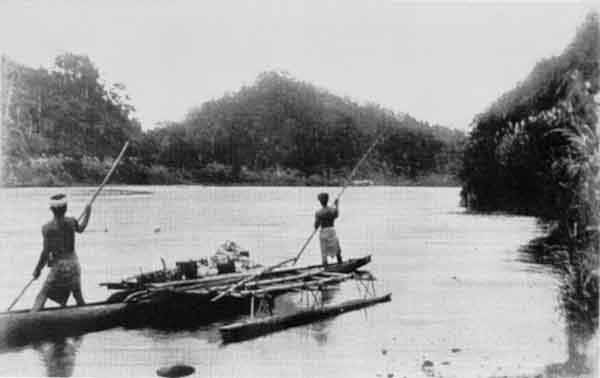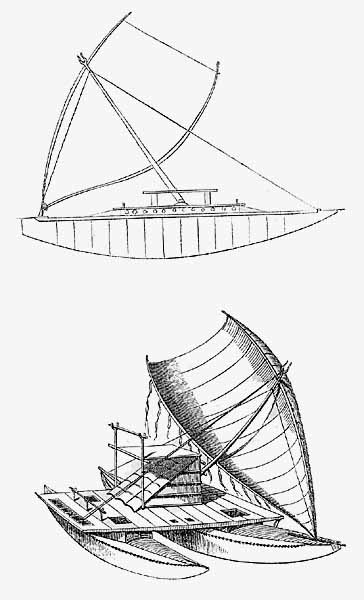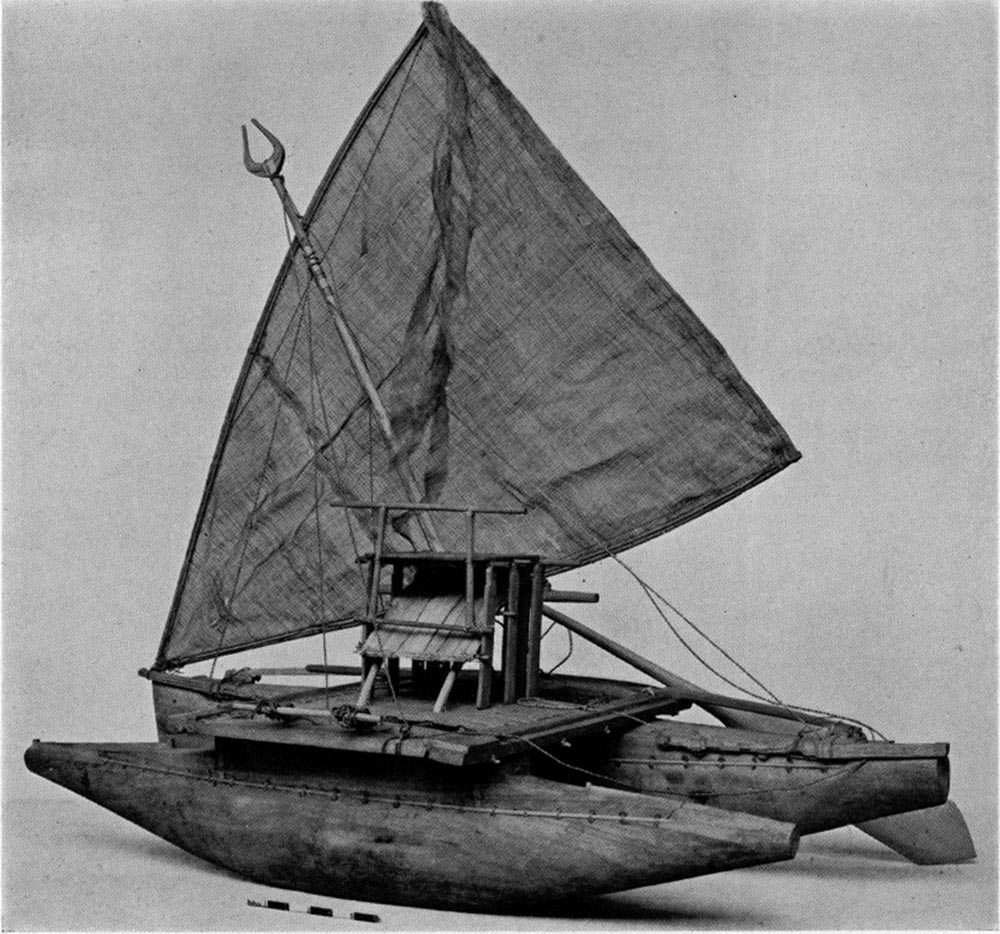Mighty FIJIAN Canoes
The handicraft of sailing vessels is a tradition that was, at one time, carried out in all parts of Fiji but is done today mainly on Kadavu Island and in the Lau Group. Models of these vessels are made by craftsmen today and although commonly refered to as Takia, there are three distinct types of canoes made into models and are described below:

|
Takia:
There is a very common outrigger canoe still used today in the outer islands, but was mainly used on inland rivers in old Fiji. The hull is an open dugout made from any suitable wood. Adze and fire are used in the following process. It seldom had a sail, no center board, and an oar is used as a rudder
|

|
Camakau (pronounced Tha-ma-cow):
Most models one sees today are of the Camakau. In its days it was one of the finest outrigger ever made. Some were as large as 100 feet, They were made from one large tree trunk, or two joined in the middle. It was fitted with single short mast, the sail being woven with voivoi. The owner of the Camakau was usually a chief, in a village, or an extended family due to the expenses involved is ownership which would involve many feasts and presentations.
|

|
Drua (pronounced ndrua):
The drua or waqa tabu (which means sacred canoe) was the largest canoe and required a crew of 50 men, and in war sometimes held 100 sailors and could still transport 200 passengers of warriors. It had different functions in war and peace. It is a double-hulled canoe, the hulls being made form fitted planks latched together by coconut cord. Bailing was constantly necessary. Speed was up to 15 knots per hour and the drua was superbly crafted for long-distance voyages. The drua has a sail of woven voivoi, and one owned by the a chief would have flags of masi flying from the sail. The drua took about 7 years to build, and from start to finish was accompanied by ceremonies and presentations so that upon completion, one could truly look upon it as sacred.
|
The crafting of canoes in Fiji was a symbol of group achievement as everyone had a role in the building process.
The building of canoes is a traditional Fijian handicraft


